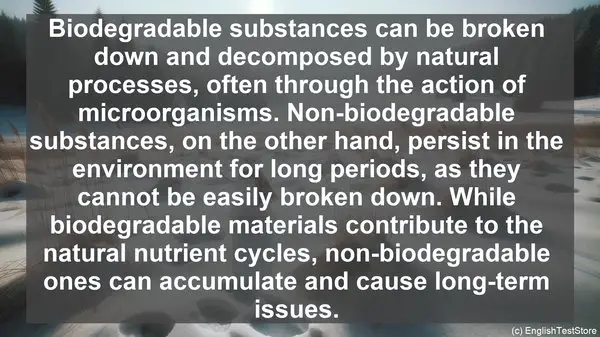Introduction
Welcome to today’s lesson on marine toxicology. In this lesson, we’ll be discussing the top 10 commonly confused words in this field. Let’s dive in!
1. Bioaccumulation vs. Biomagnification
Bioaccumulation refers to the gradual accumulation of a substance in an organism’s tissues over time. On the other hand, biomagnification is the process where the concentration of a substance increases at each trophic level in a food chain. While both involve the increase of a substance, the key difference lies in the scale – bioaccumulation occurs within an organism, while biomagnification happens across a food chain.

2. Toxicity vs. Ecotoxicity
Toxicity refers to the harmful effects a substance can have on an organism. Ecotoxicity, on the other hand, focuses on the impact of a substance on an entire ecosystem. While toxicity considers individual organisms, ecotoxicity takes into account the interactions and dynamics within a community of organisms.
3. Contamination vs. Pollution
Contamination refers to the presence of any unwanted substance in an environment. Pollution, on the other hand, is the introduction of harmful or toxic substances into the environment, often caused by human activities. While contamination can be natural, pollution is predominantly a result of human actions.
4. Acute vs. Chronic Exposure
Acute exposure refers to a high-level, short-term exposure to a substance. It often results in immediate, noticeable effects. Chronic exposure, on the other hand, occurs over an extended period, usually at lower levels. While acute exposure can have immediate impacts, chronic exposure’s effects may be long-term and cumulative.
5. Synergistic vs. Antagonistic Effects
Synergistic effects occur when the combined effect of two or more substances is greater than the sum of their individual effects. Antagonistic effects, on the other hand, happen when the presence of one substance reduces or nullifies the effect of another. While synergistic effects can amplify the impact, antagonistic effects can mitigate it.
6. Benthic vs. Pelagic
Benthic refers to the bottom or floor of a body of water, including the sediment and organisms living there. Pelagic, on the other hand, refers to the open water column. While benthic areas are often in close proximity to the shore or seabed, pelagic regions are further away, often characterized by their depth.

7. Eutrophication vs. Hypoxia
Eutrophication is the process where a body of water becomes enriched with nutrients, often leading to excessive plant growth. Hypoxia, on the other hand, is the depletion of oxygen in a water body, often caused by eutrophication. While eutrophication is the cause, hypoxia is one of its potential consequences.
8. Anoxia vs. Dead Zone
Anoxia refers to the complete absence of oxygen in a water body. A dead zone, on the other hand, is an area with extremely low oxygen levels, often leading to the death of marine organisms. While anoxia is the absence of oxygen, a dead zone is a specific location where this condition occurs.
9. Biodegradable vs. Non-Biodegradable
Biodegradable substances can be broken down and decomposed by natural processes, often through the action of microorganisms. Non-biodegradable substances, on the other hand, persist in the environment for long periods, as they cannot be easily broken down. While biodegradable materials contribute to the natural nutrient cycles, non-biodegradable ones can accumulate and cause long-term issues.
10. Indicator Species vs. Keystone Species
Indicator species are organisms that can provide insights into the overall health or condition of an ecosystem. They often exhibit specific responses to environmental changes. Keystone species, on the other hand, have a disproportionately large impact on their environment, often influencing the structure and dynamics of a community. While indicator species reflect the state, keystone species drive the functioning of an ecosystem.
